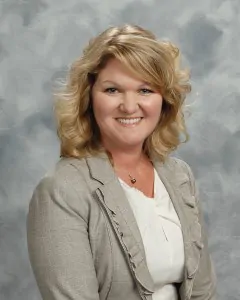

Dr. Charles Hostetler is presenting on Wednesday, February 28th (11:00 am – 11:30 am, Century).
“Pore Space Conflicts: Class VI Injection into Previously Utilized Pore Space”
Class VI projects (involving underground injection control (UIC) wells for the geologic sequestration of carbon dioxide) can have a surprisingly large footprint in terms of the lateral extent of pore space occupied by supercritical carbon dioxide as well as pressure increases in the injection zone. A limited amount of subsurface pore space is available in certain economically important sedimentary basins and there can be difficulties in finding unutilized pore space.
Interactions among neighboring UIC projects can be an important consideration in the scoping and design of Class VI projects. Class VI project design has largely focused on examining the extent of the subsurface supercritical carbon dioxide plume and ensuring access to and control over the pore space physically occupied by the plume. The pressure buildup during injection also influences subsurface pore space. The existence of pressure buildup from neighboring injection projects can be an important limitation in efficiently utilizing pore space resources across multiple projects.
In this study, we examine the factors that affect the injectability of a supercritical carbon dioxide stream near a preexisting Class I (liquid waste) UIC well. We consider the factors that influence the pressure distribution in the injection zone, such as the compressibility of water and supercritical carbon dioxide, the properties of the aquifer materials, and the geometry of the injection zone and injection wells. We conclude by summarizing the general factors that should be considered in project scoping and Area of Review delineation—additional authors: Kacey Garber and Lindsey Hawksworth, SCS Engineers.
Additional Resources:
Geologic Media for Carbon Sequestration and Deep Well Injection Projects – Always Building UIC Knowledge
SCS Engineers provides turnkey underground injection control (UIC) services for the deep injection and permanent geologic storage of liquid waste (Class I UIC) and carbon dioxide (Class VI UIC). The ability to interpret and correlate deep well logs is fundamental to developing the geologic site characterization and subsurface modeling components of our deep well injection and carbon sequestration projects. We ultimately use the data gathered from these logs to construct geologic maps, cross sections, and static geologic models during the pre-permitting and permitting phase of these UIC projects. This allows us to explore optimal injection strategies for safe and efficient projects.
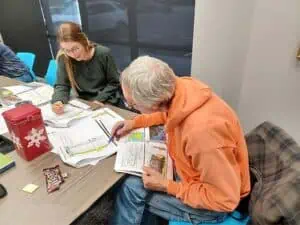
Recently, a group of scientists from the SCS Carbon Sequestration and Deep Well Injection Team gathered at our office in Wichita, Kansas, to attend a three-day course on deep well log interpretation and correlation. Dr. Ali Jaffri, the CEO of Applied Stratigraphix, a Denver, CO-based consulting and training firm, led the course. They offer a variety of training workshops and field courses focused on subsurface geologic interpretation, primarily for oil and gas industry geologists.
The course covered topics including:
The course devoted considerable time towards getting hands-on experience working together on interpreting and correlating well logs, including logs from our current UIC project areas, and discussing how we can apply the concepts we learned in other regions. We highly recommend this unique training for geologists in carbon sequestration.
We never stop learning, innovating, and sharing.
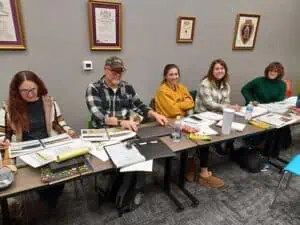
SCS is incorporating the content from this course and other published resources into developing updated and refined standard operating procedures for producing geologic deliverables for our deep well injection and carbon sequestration clients. As our subsurface geology team continues to expand as we meet the needs of this rapidly growing market, we are committed to operating as a high-performance team to provide quality geologic deliverables to our clients on every project.
Kacey Garber arranged the training event, contact her on LinkedIn for more information.
Learn more about Carbon Sequestration and UIC here.
The Groundwater Protection Council is hosting is 2024 Underground Injection Control (UIC) Conference at the Sheraton Downtown Oklahoma City, February 26-28.
The sessions will explore the latest regulations, technologies, and best practices in underground injection control. The conference also offers in-depth technical workshops and many networking opportunities.
Click for more GPC 2024 UIC Conference details and registration information
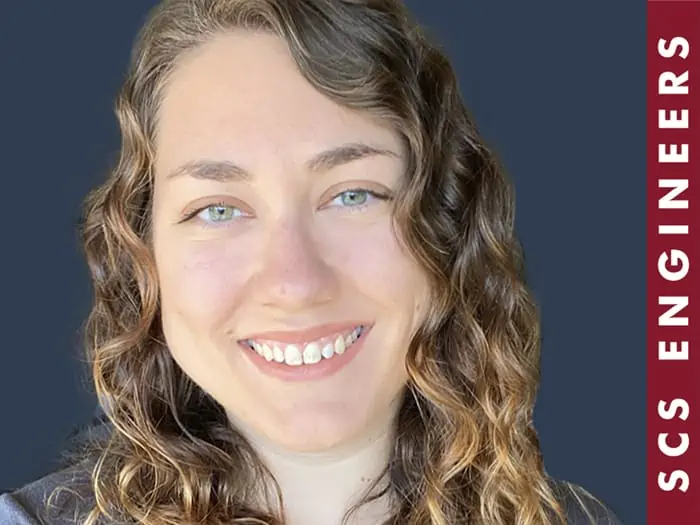
Description: Class I UIC wells may be utilized to dispose fluid wastes within deep geologic units, such as depleted hydrocarbon reservoirs or saline aquifers. Class I UIC wells may be located in the vicinity of other injection wells associated with disposal and/or hydrocarbon production. Injecting fluids leads to mixing with, and displacement of, native fluids within the reservoir. Because water is relatively incompressible, the mixing and displacement of fluids leads to a buildup of pressure within the reservoir. The magnitude of this pressure buildup is dependent on several factors, including the porosity and permeability of the reservoir, the density and viscosity of both the previous and present day injectate and native fluids, and the thickness and lateral extent of the reservoir. Elevated reservoir pressures resulting from injection can allow fluids to migrate upwards through open or improperly plugged artificial penetrations and/or fractures of the reservoir or confining zones, either of which would endanger overlying aquifers. As a result, agencies require Class I UIC permit applications to include calculations or modeling to assess what pressure thresholds would lead to aquifer endangerment. Many of these calculations do not allow realistic predictions of pressure buildup or plume extent in situations where co-mingling of waste plumes may occur. In this presentation, we assess the utility of computational flow modeling for complex injection scenarios where co-mingling of waste plumes from neighboring operations might influence pressure buildup and overall plume extent.
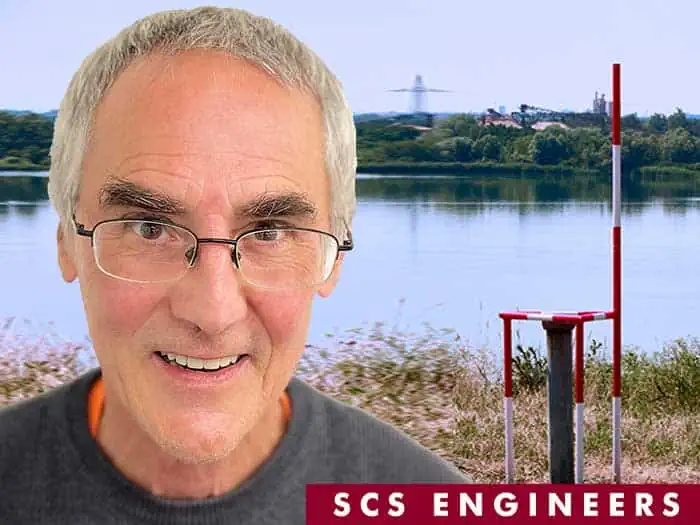
Description: Class VI projects (involving underground injection control (UIC) wells for the geologic sequestration of carbon dioxide) can have a surprisingly large footprint in terms of lateral extent of pore space occupied by supercritical carbon dioxide as well as pressure increases in the injection zone. A limited amount of subsurface pore space is available in certain economically important sedimentary basins and there can be difficulties in finding unutilized pore space. Interactions among neighboring UIC projects can be an important consideration in the scoping and design of Class VI projects. Class VI project design has largely focused on examining the extent of the subsurface supercritical carbon dioxide plume and ensuring access to, and control over, the pore space physically occupied by the plume. Subsurface pore space is also influenced by the pressure buildup during injection. The existence of pressure buildup from neighboring injection projects can be an important limitation in efficiently utilizing pore space resources across multiple projects. In this study, we examine the factors that affect the injectability of a supercritical carbon dioxide stream in the vicinity of a preexisting Class I (liquid waste) UIC well. We consider the factors that influence the pressure distribution in the injection zone, such as the compressibility of water and supercritical carbon dioxide, the properties of the aquifer materials, and the geometry of the injection zone and injection wells. We conclude by summarizing the general factors that should be considered in project scoping and Area of Review delineation. Additional authors: Kacey Garber, SCS Engineers, and Lindsey Hawksworth, SCS Engineers.
We hope to see you there!
Class VI Underground Injection Control Well Permitting is Part III of our video series on Carbon Capture and Storage. Cutting through red tape and regulatory barriers is key to keeping the permitting process on track for your Class VI UIC well. There are steps you can take to prevent delays and meet key regulatory requirements.
Watch the SCS’s Carbon Capture and Storage webinar to learn more about each phase of the permitting process and how to keep each running smoothly. Carbon capture and storage is an EPA-approved technology companies are exploring to help them reduce their greenhouse gas emissions, and understanding the permitting process is key as you plan your project. In this chapter you’ll get answers to these questions:
Your business does not have to be in Illinois to learn from these educational webinars. If you’re ready to explore the benefits of carbon capture and storage but concerned you’ll get delayed by the ins and outs of the Class VI UIC well permitting process, watch Patty Herman’s video to learn more, or contact your local SCS office for a consultation.

Additional Resources:
Carbon capture and storage (CCS) enables industry and manufacturing to reduce greenhouse gas footprints by up to 2 million metric tons annually, for decades. It’s a great time to learn how this technology works, how it can help you, and what the overall lifecycle of a CCS project looks like. In this chapter, Kacey Garber and Candy Elliot step through best practices based on project experience, regulations (in this example Illinois), and the compilation and submittal of permit applications. You’ll learn about:
Your business does not have to be in Illinois to learn from these educational, non-commercial webinars. Transform how industry leaders like you manage greenhouse gas as a byproduct of modern life.
Helpful Basic Tips:
Early planning and mindful project scoping are critical for a CCS project to understand and communicate the project’s needs, objectives, goals, and conceptualized design. Use site characterization data and have a good handle on the operational parameters to develop a good first model and initial area of review delineation. The monitoring system design should then be tailored based on those data. Use the baseline and operational monitoring data to calibrate the model and refine your area of review delineation.
Early financial planning is also important and should include long-term operations and monitoring. Spend rates will be variable throughout these projects and highly dependent on the project’s phase.
The site geology is a key factor — we highly recommend conducting a feasibility study before beginning a project to assess the suitability of Class 6 injection at the proposed location. In addition, when the permit process begins, it’s important to front-load the site characterization efforts to minimize the uncertainty surrounding your site suitability.
Proactive stakeholder engagement surrounding your project is more likely to help lead your project to success. Developing outreach plans help open and facilitate lines of communication with stakeholders, regulatory officials, and public and environmental advocate groups.
Use an iterative project approach – permitting is not a cookie-cutter but a site-specific process. Your early and thorough planning steps help create a feedback loop that will go on throughout the project’s life. It enables flexibility in implementing your approach.


Engaging With Your Stakeholders and Public Outreach is Part II of our four part video series.
Geologic sequestration can be seen as an incredible public good that reduces greenhouse gas and protects the health and wellness of generations to come, or a local risk. It’s likely you will receive questions and concerns from the public and other stakeholders during your project’s lifecycle. You can use an effective stakeholder engagement plan to help you anticipate and respond to those questions and concerns.
Watch the Geologic Sequestration webinar to learn how to engage your key stakeholders in a supportive, consistent way that demonstrates your commitment to the community and builds trust. Geologic sequestration is an EPA-approved technology companies are exploring to help them reduce their greenhouse gas emissions. In this chapter you’ll learn:
If you’re ready to explore the benefits of geologic sequestration and want to educate the public and stakeholders about the safety and sustainability of Class VI underground injection control wells, watch Richard Southorn’s video to learn more, or contact your local SCS office for a consultation.

Additional Resources:
What if you could reduce your company’s greenhouse gas (GHG) emissions by 1.5 to 2 million metric tons per year for the next 20 years?
Now you can, with carbon capture and storage technology. Watch the Illinois Basin Carbon Capture and Storage webinar to learn more. Carbon capture and storage is an EPA-approved technology companies are exploring to help reduce GHG emissions.
In Illinois and many other states, leading firms are submitting permit applications for Class VI underground injection control wells. It’s a great time to review the state of the practice and learn how this technology works and how it can help you meet your carbon reduction goals. In this video chapter, SCS answers these questions:
This technology is on track to transform how industry leaders like you manage greenhouse gas as a byproduct of modern life. Watch Charles Hostetler’s short video to learn more, or contact your local SCS Engineers’ office for a consultation.

Additional Resources:
Downhole scaling of organic compounds presents challenges in Class I disposal wells. Once chemical and physical conditions drive biological growth and mineral precipitation, the resulting downhole scale must be confronted with expensive workovers, stimulations, or even plugging and abandonment. In one Midwest case study, an electric utility is battling ferric, carbonate, and sulfate precipitate driven by fluctuating pH in its coal combustion residuals (CCR) leachate. Using a variety of geochemical models, we are taking a proactive approach to eliminate expensive fixes by simulating the saturation indices of key mineral species under defined parameters that drive the formation of downhole precipitate under temperature and pressure.
Using a variety of chemical equilibrium models such as PHREEQC, MINTEQ, WATEQ4F, and Geochemist’s Workbench, conceptual scenarios are run at the surface and in the mixing zone of the downhole reservoir using site-specific water-quality data, pressures, and temperatures. Each scenario provides anticipated mineral saturation states, used to estimate mass removal or chemical neutralization to prevent downhole precipitation. To mirror the dynamic nature of the CCR leachate water chemistry, modeling will continue as an iterative process whereby we will continue to collect data and run simulations to stay ahead of changes that could affect the downhole well chemistry.
This proactive approach will reduce the potential for downhole scaling to increase operational efficiency, reduce maintenance costs, and extend the life of this Class I well.
Meet Stephanie Hill and the SCS team at the Groundwater Protection Council’s 2019 Underground Injection Control conference. Tuesday, Feb. 26 from 10:30 a.m. – 12:00.
